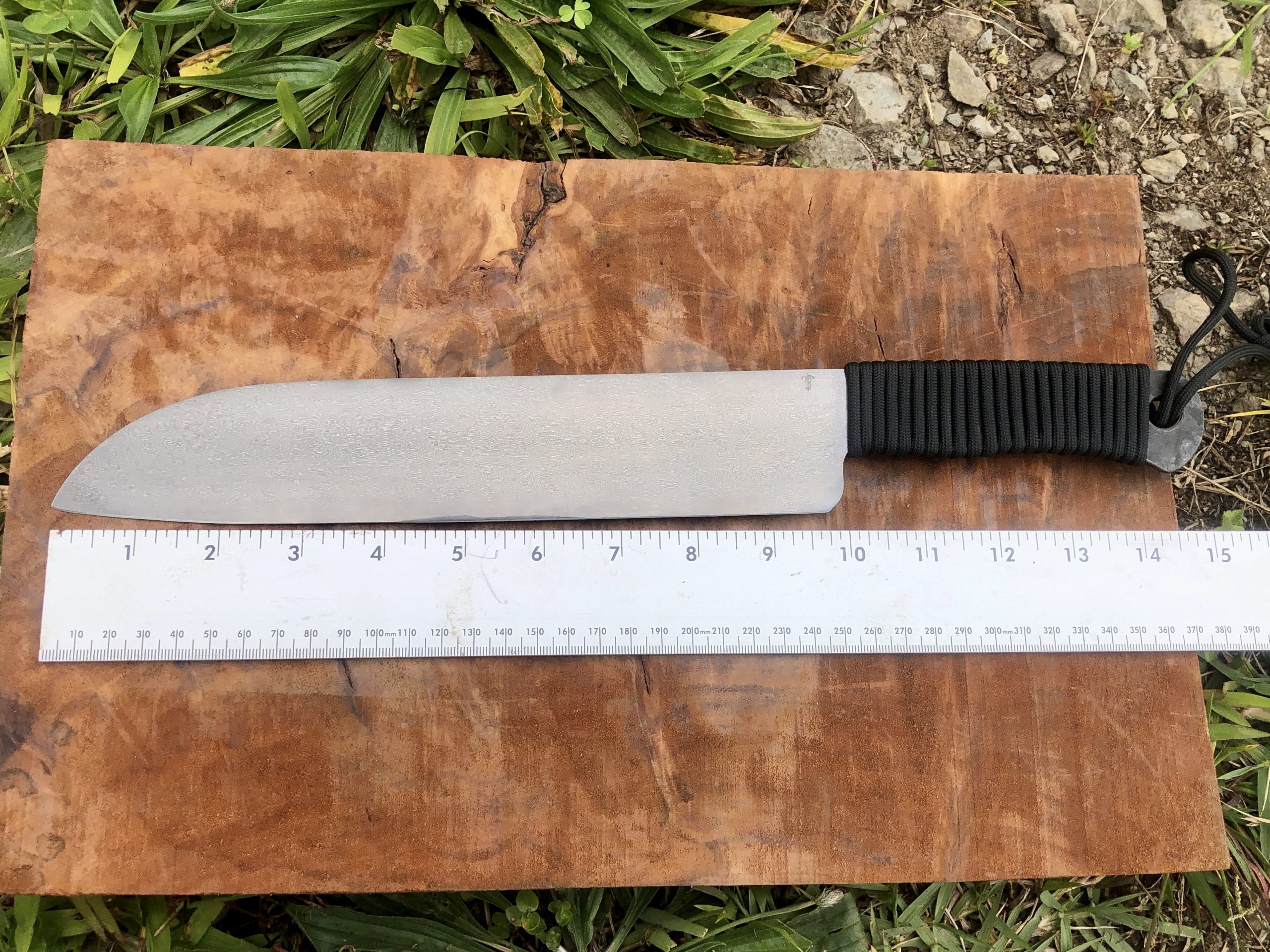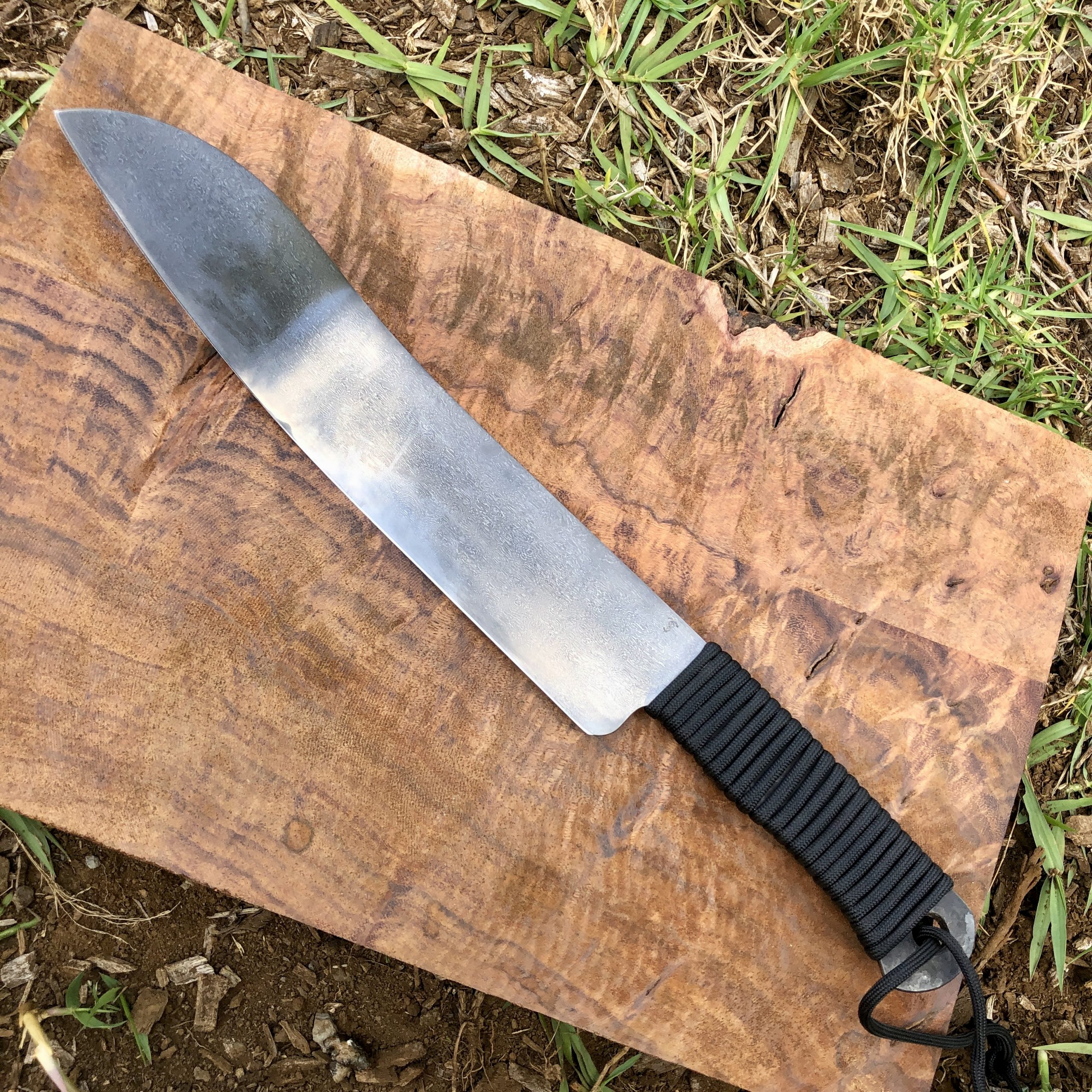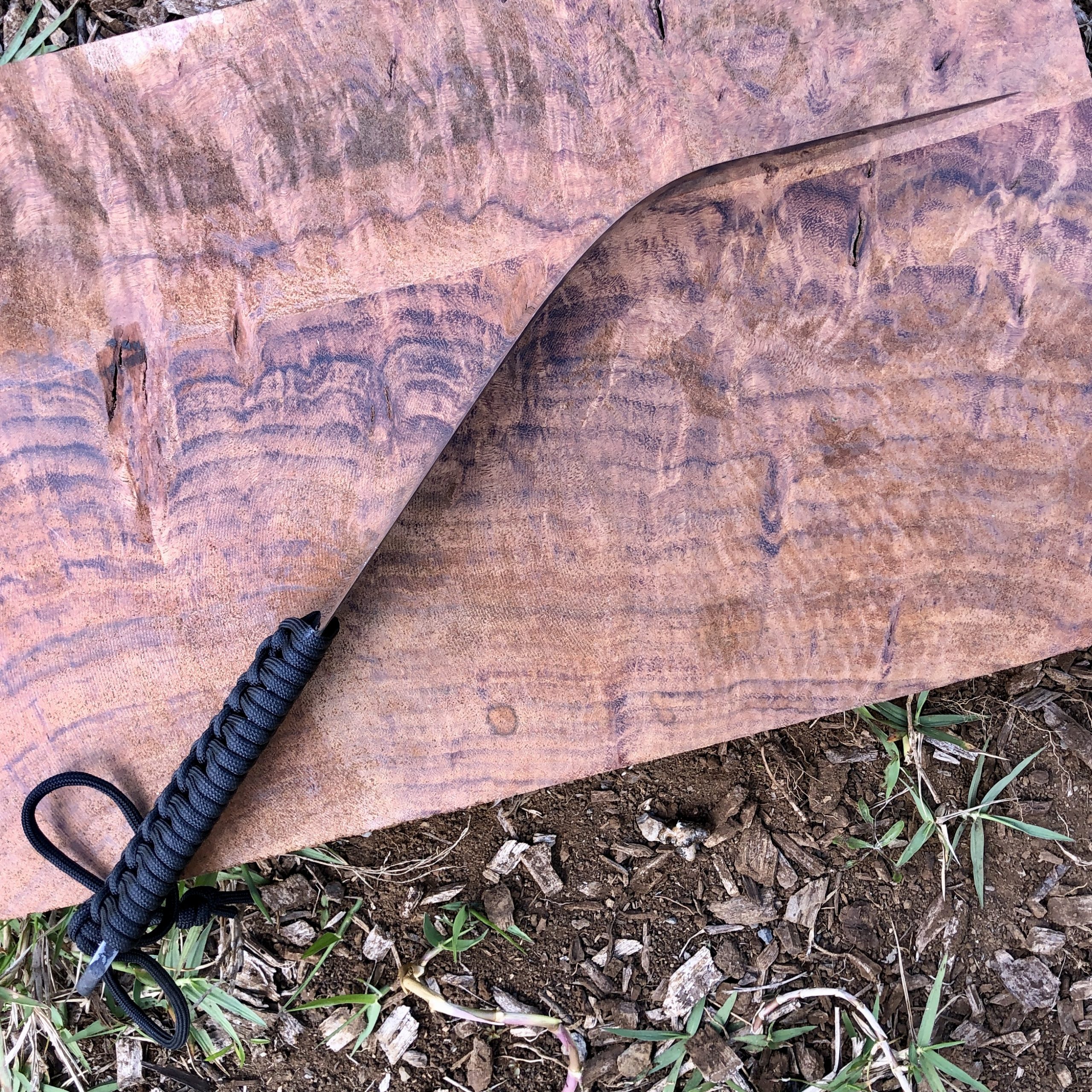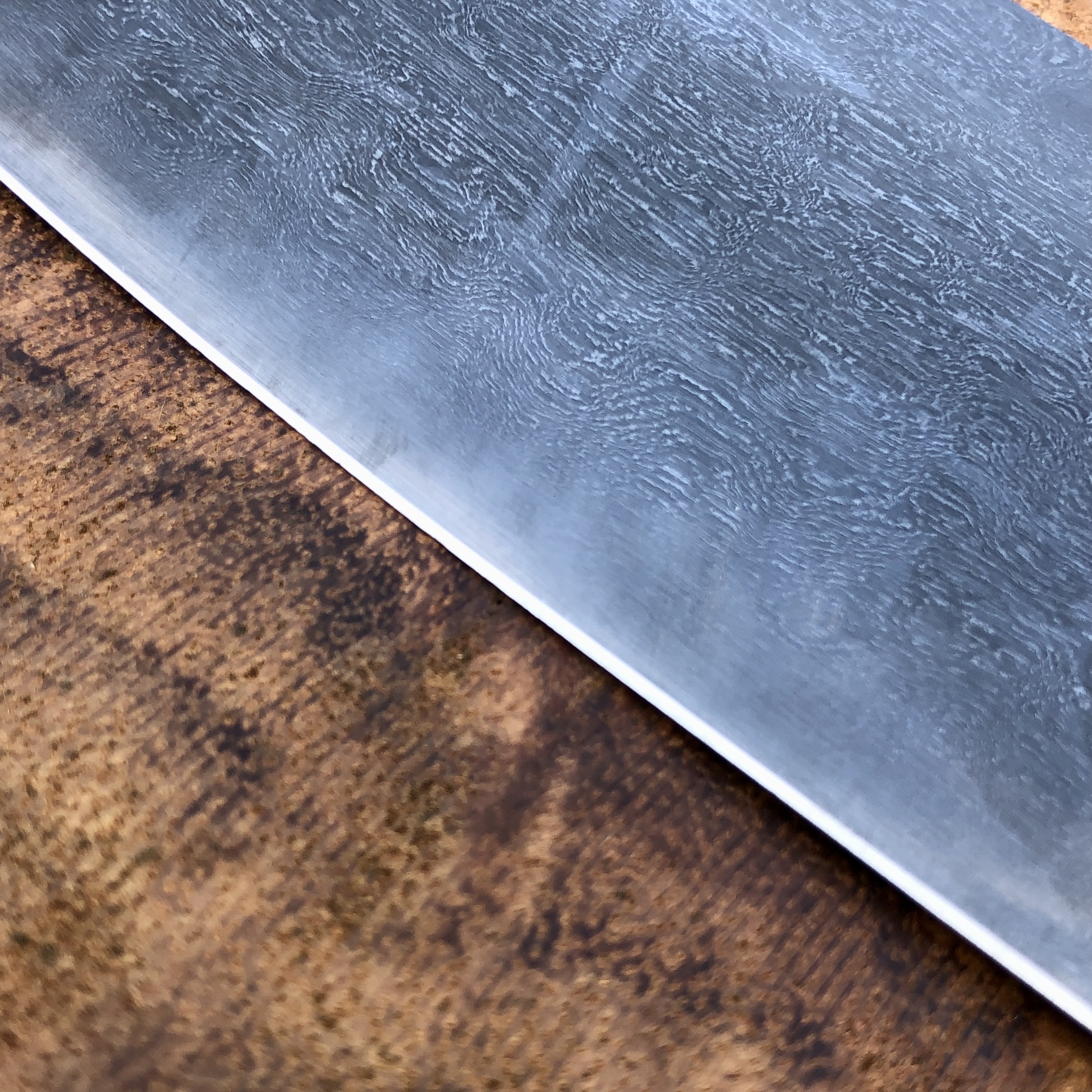The test knives that are submitted for the Journeyman Wootzsmith and the Master Wootzsmith certifications must meet certain criteria. The knives for the Performance Tests need to be as similar as possible from applicant to applicant in order to maintain safety and consistency in the testing, and to this end Peter Burt created a prototype knife that will be the standard design to follow. This basic design should be used for the submitted knives, making sure to stay within the following measurements: Overall length not more than 15″; blade length not more than 10″; Blade thickness not more than 0.1875″; and blade width not more than 2″. The wootz pattern must be clearly visible on the blade.
Peter’s prototype knife utilized a paracord wrap, and this is the preferred handle type. Riveted scales are also acceptable but must not be overly bulky or highly polished. The focus of the handle design and execution are a secure and reasonably comfortable grip. The handle must include a secure lanyard for safety reasons. All knives must be of full tang construction to ensure proper behavior in the Flex Test.




The knives submitted for testing should follow this design quite closely. Minor variations are acceptable, but the basic shape and profile dimensions should be quite close. There are no restrictions on the type of pattern for the JWS certification knives as long as the pattern is clearly visible and definitely a carbide-based pattern. The steel MUST be of the smith’s own making; blades found to be otherwise will be immediately disqualified and the applicant may be ejected from the Society.
Test knives for the Master Wootzsmith testing will follow the same design, but will have more specific requirements in terms of pattern and chemistry. The specific requirements are still being determined.
Peter put his prototype knife through the JWS certification tests, and a full video of the process can be viewed here. As evidence that the blade suffered no cracking or substantial damage during the testing, here we have a few follow up pictures of the blade.




If you have any questions regarding any aspects of the testing, please contact the Certification Officer.